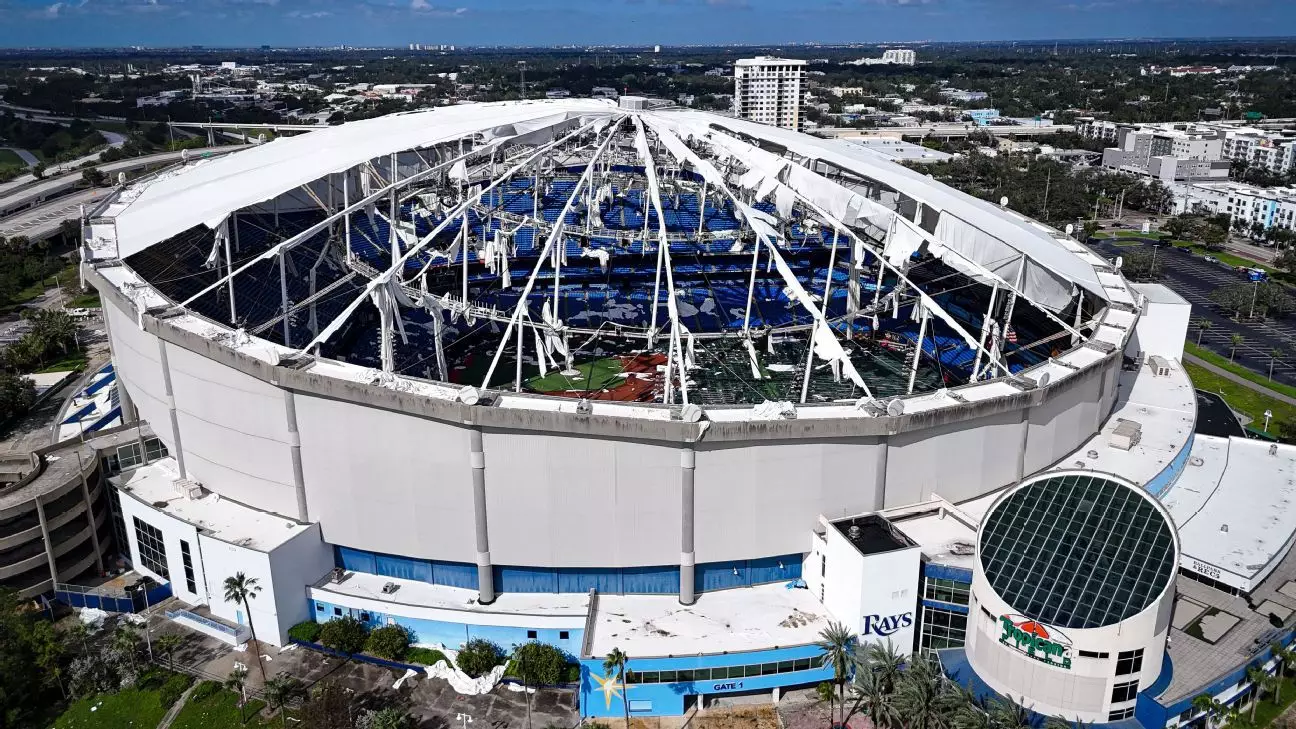The recent support from the Tampa Bay Rays for a substantial $55.7 million reconstruction plan aimed at restoring Tropicana Field is a crucial step following the significant damage inflicted by Hurricane Milton. The storm, which made landfall on October 9, devastated the ballpark, ripping apart its fabric roof and resulting in considerable water and structural damage. As the team grapples with the ongoing repairs, the urgency to ensure the stadium is ready for the 2026 season opener cannot be overstated.
In the aftermath of the hurricane, a sense of uncertainty loomed over the Rays’ commitment to Tropicana Field. However, Matt Silverman, Rays’ co-president, has clarified the team’s intentions in correspondence with city officials. In a December 30 email, he emphasized the importance of moving forward with rebuilding efforts in line with the existing use agreement, dismissing any ideas of the city potentially buying out the team’s obligation. Silverman’s message not only conveys the determination of the team to restore the venue but also highlights the logistical hurdles they face in keeping the 2026 season on track.
Time is a critical factor in the rebuilding process. Silverman articulated the significant risks associated with a postponed 2026 season at Tropicana Field, which would introduce considerable logistical complications and impact revenue for the team. The Rays are set to play their home games for the 2025 season at the New York Yankees’ spring training facility, Steinbrenner Field, which indicates a temporary relocation strategy as they await the completion of repairs. The co-president’s insistence on initiating reconstruction efforts as soon as possible underscores a broader concern about the stadium’s viability in the face of continuous operational challenges.
The St. Petersburg city council’s response to the reconstruction proposal has been less than enthusiastic, primarily due to the financial burden it would impose on the city. As residents and local businesses still recover from the aftermath of Hurricane Milton and its predecessor, Hurricane Helene, there is a palpable apprehension regarding any additional financial obligations. St. Petersburg Mayor Ken Welch has pointed towards insurance and federal funds as potential sources to alleviate the cost burden, yet how effectively these funds will materialize remains uncertain.
Amidst the ongoing debate over the repairs, plans for a new, state-of-the-art ballpark in downtown St. Petersburg continue to take shape. This proposed facility is part of a much larger $6.5 billion development endeavor known as the Historic Gas Plant District. The project promises to revitalize an area with a rich history, catering not only to the needs of the Rays but also providing affordable housing, retail spaces, and a Black history museum, among other developments.
This transformation is deeply rooted in the historical significance of the Gas Plant District, which was once a vibrant Black community that faced displacement due to the construction of the original ballpark and the adjacent interstate highway. As the Rays embark on their journey to ensure the longevity of Major League Baseball in St. Petersburg, it is essential to acknowledge and rectify the historical upheaval faced by the neighborhood’s original residents.
Despite the myriad challenges presented by the current circumstances, the commitment from the Tampa Bay Rays to work collaboratively with the city signals a desire to foster a sustainable relationship moving forward. Waiting for approval on the repair proposal could potentially stall crucial momentum, putting the future of both the team and the community at stake.
As the Rays await the start of construction, Major League Baseball has announced plans to appoint an advisor who will oversee the repair work and ensure the timeline aligns with the 2026 season schedule. With the promise of a “grand reopening,” the Rays appear poised for an ambitious revival, but the ultimate success of these efforts will depend on effective communication and collaboration among the stakeholders involved. The coming years will be pivotal not only for the team’s future but also in addressing historical injustices and revitalizing the broader St. Petersburg community.


Leave a Reply